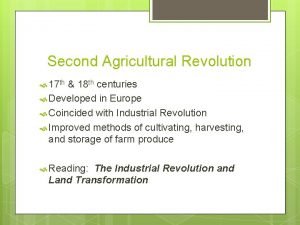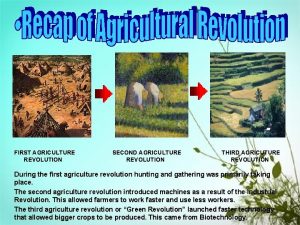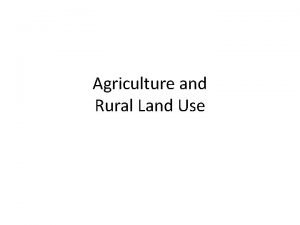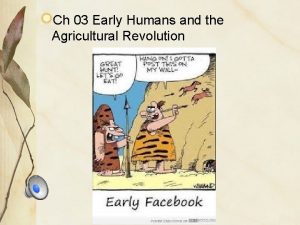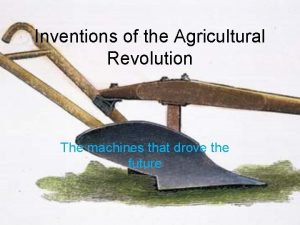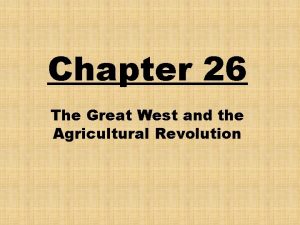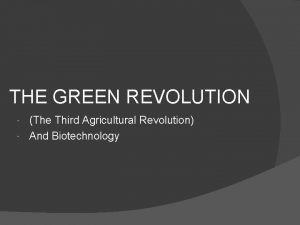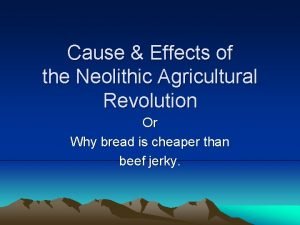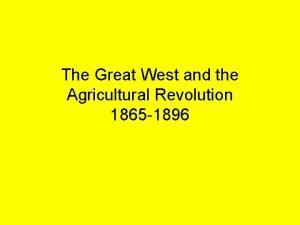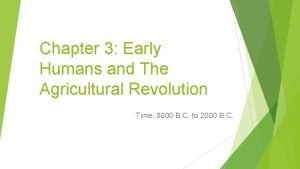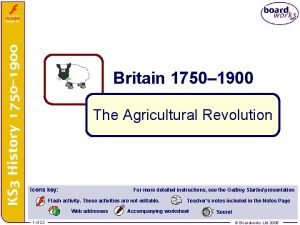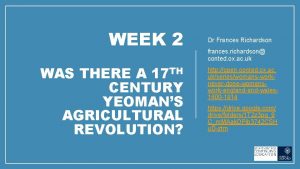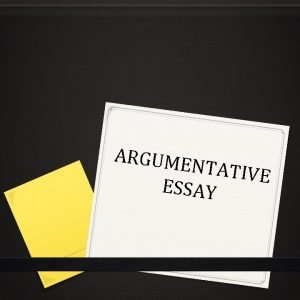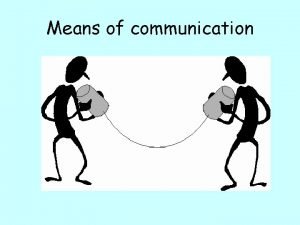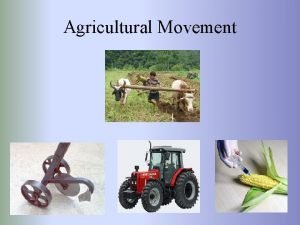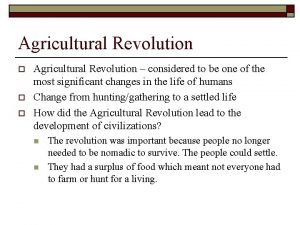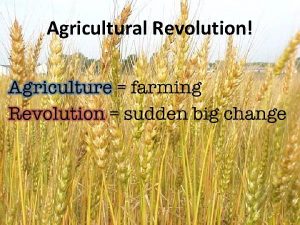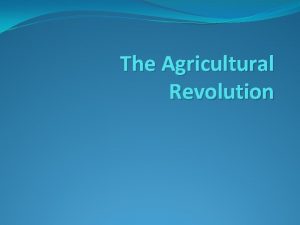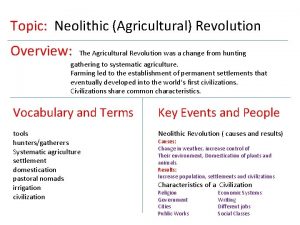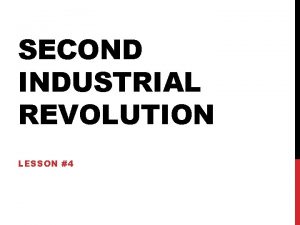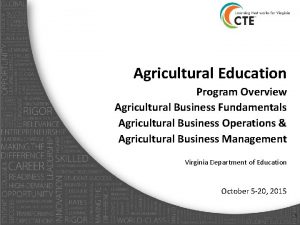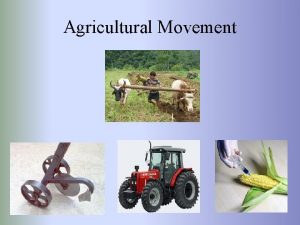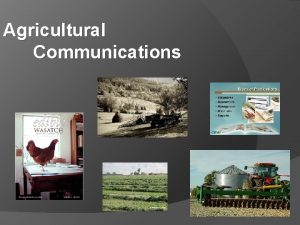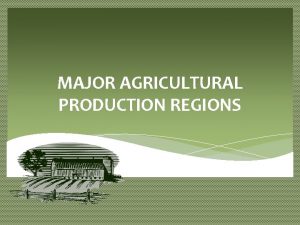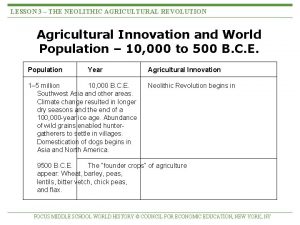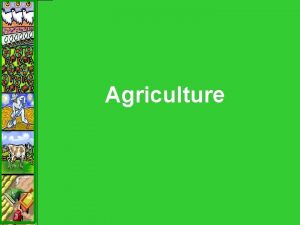Second Agricultural Revolution 17 th 18 th centuries























- Slides: 23

Second Agricultural Revolution 17 th & 18 th centuries Developed in Europe Coincided with Industrial Revolution Improved methods of cultivating, harvesting, and storage of farm produce Reading: The Industrial Revolution and Land Transformation

Reading Task: Identify six consequences the Industrial Revolution had on agriculture and mankind’s relationship with the land.

Changes: Rise of the Machines

Changes: Rise of the Machines

Changes: Rise of the Machines

Changes: New Technologies Seed drill Improved irrigation New fertilizers Artificial feeds (for livestock) Mechanical reaper

European Crop Rotation

Changes: Population The Industrial Revolution has a dramatic impact on human population. Increase demand for food https: //www. youtube. com/watch? v=cv 58 O DIXd. Tw

Changes: New Jobs Less people working in agriculture City populations grow Factory jobs available Farming goes from subsistence to commercial.

Subsistence vs. Commercial Subsistence (LDC) Purpose Consumption Farm % size Small of farmers Majority of population Machinery Mostly by hand Farms & other industries Mostly isolated Commercial (MDC) Purpose Off-farm sale Farm % size Large of farmers Minority of population Machinery Mostly mechanized Farms & other industries Highly integrated

Labor Force In Agriculture o In MDCs relatively few people work in agriculture. o In LDCs the percentage of people in agriculture can be very high – often a majority.

Machinery o The reason that a small number of farmers are able to feed large numbers of people in MDCs is because of machinery – tractors, cultivators, milking machines, etc. o Transportation systems are also important, as are the use of fertilizers, herbicides, advanced plant and animal breeding programs, and even electronic monitoring of crops.

Farm Size Data on farm size is hard to get – and different farm types (e. g. ranches vs. gardens) make meaningful comparisons difficult. Nevertheless – we can say that in developed countries, farms do tend to be larger than in developing countries.

Diet: MDC The vs more developed a state is the higher the food consumption Better food security: physical, social, and economic access at all times to safe and nutritious food sufficient to meet dietary needs. Food is grown and shipped from far off places. LDC Less developed countries struggle more with food security and undernourishment (roughly 870 million people globally). 15% of population in LDC or developing countries undernourished compared to 5% in developed. Most undernourished places: South Asia, Sub. Saharan Africa, East Asia.









 The second agricultural revolution coincided with
The second agricultural revolution coincided with The second agricultural revolution
The second agricultural revolution The second agricultural revolution
The second agricultural revolution Modern commercial agriculture
Modern commercial agriculture Early humans and the agricultural revolution answer key
Early humans and the agricultural revolution answer key Agricultural revolution inventions
Agricultural revolution inventions Chapter 26 the great west and the agricultural revolution
Chapter 26 the great west and the agricultural revolution Third agricultural revolution
Third agricultural revolution Agricultural revolutions ap human geography definition
Agricultural revolutions ap human geography definition Cause and effect of agricultural revolution
Cause and effect of agricultural revolution The great west and the agricultural revolution
The great west and the agricultural revolution Early humans and the agricultural revolution
Early humans and the agricultural revolution Agricultural revolution worksheet
Agricultural revolution worksheet The agricultural revolution
The agricultural revolution Lesson 2 the neolithic revolution
Lesson 2 the neolithic revolution 27 miles per gallon into kilometers per liter
27 miles per gallon into kilometers per liter For centuries prominent thinkers have pondered
For centuries prominent thinkers have pondered People have wondered for centuries
People have wondered for centuries For centuries prominent thinkers have pondered
For centuries prominent thinkers have pondered Means of communication
Means of communication The fundamental theme through all the centuries
The fundamental theme through all the centuries Capital of niger
Capital of niger Redlining ap human geography
Redlining ap human geography 5 urban hearths
5 urban hearths
